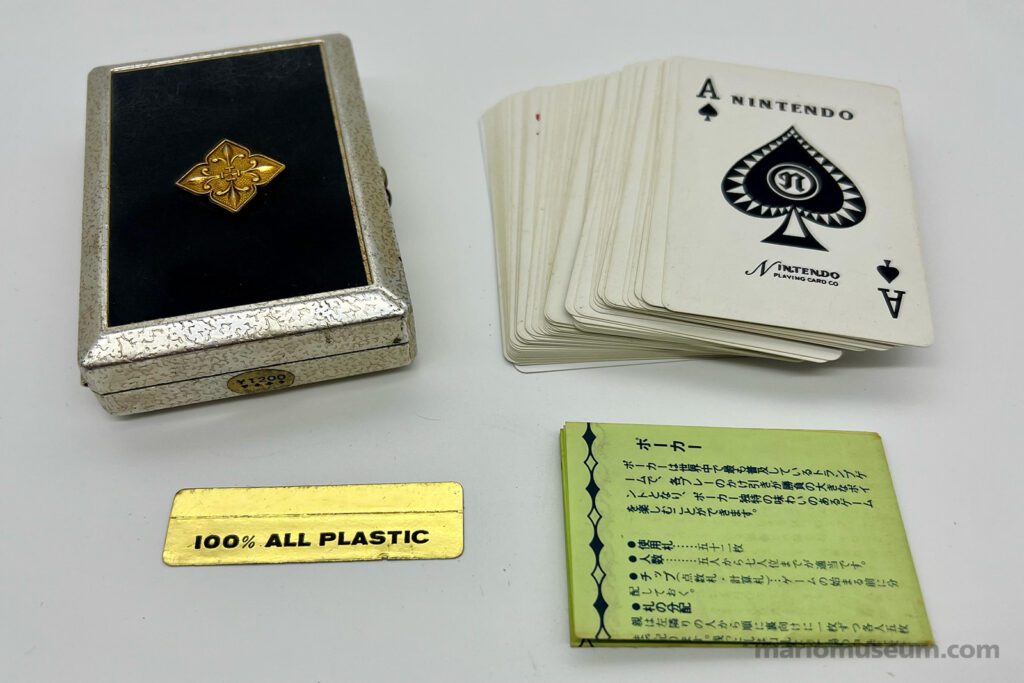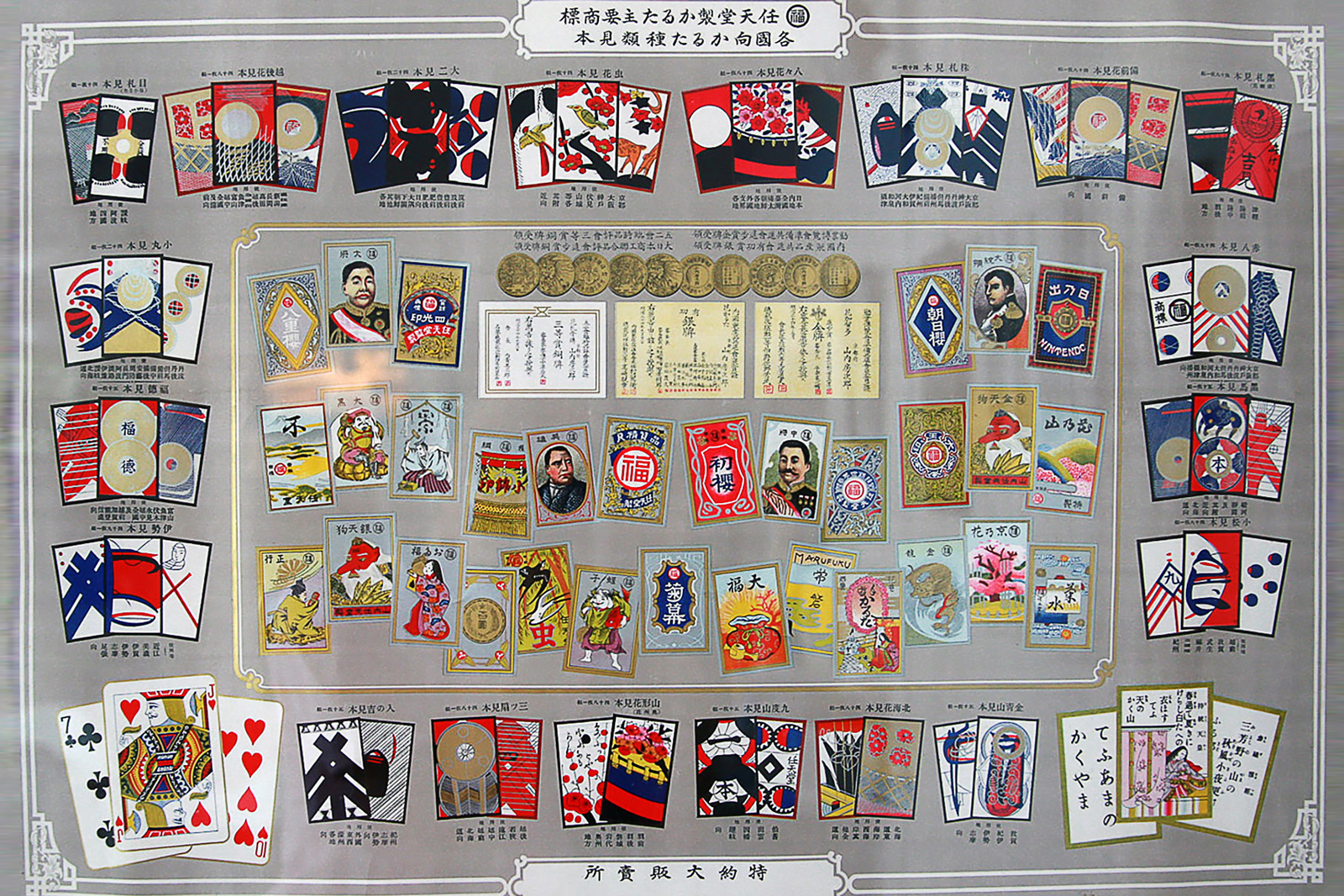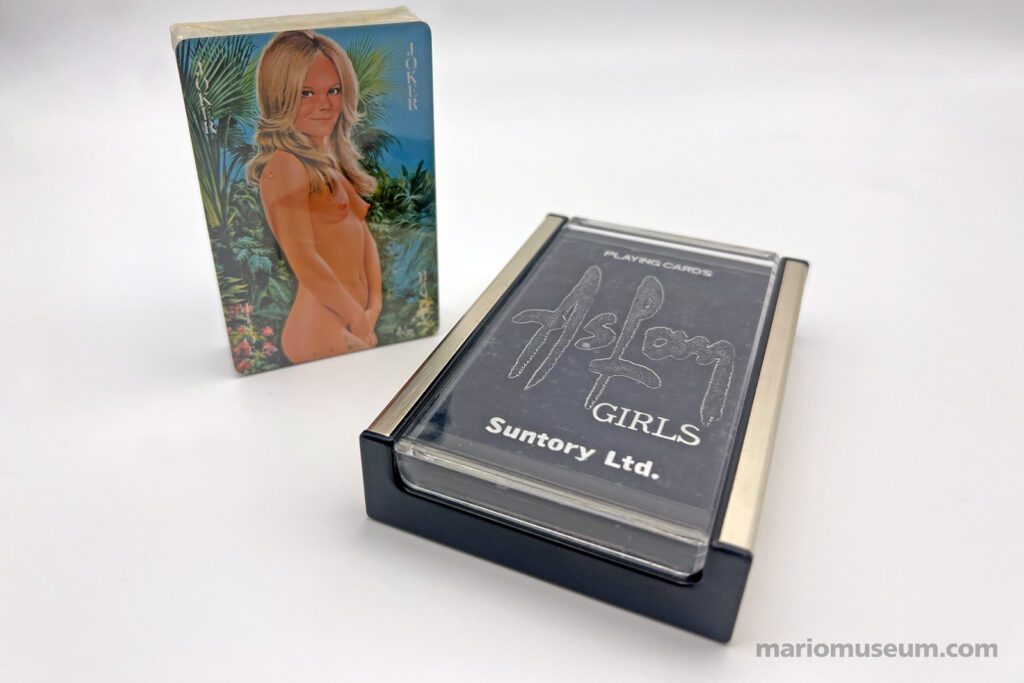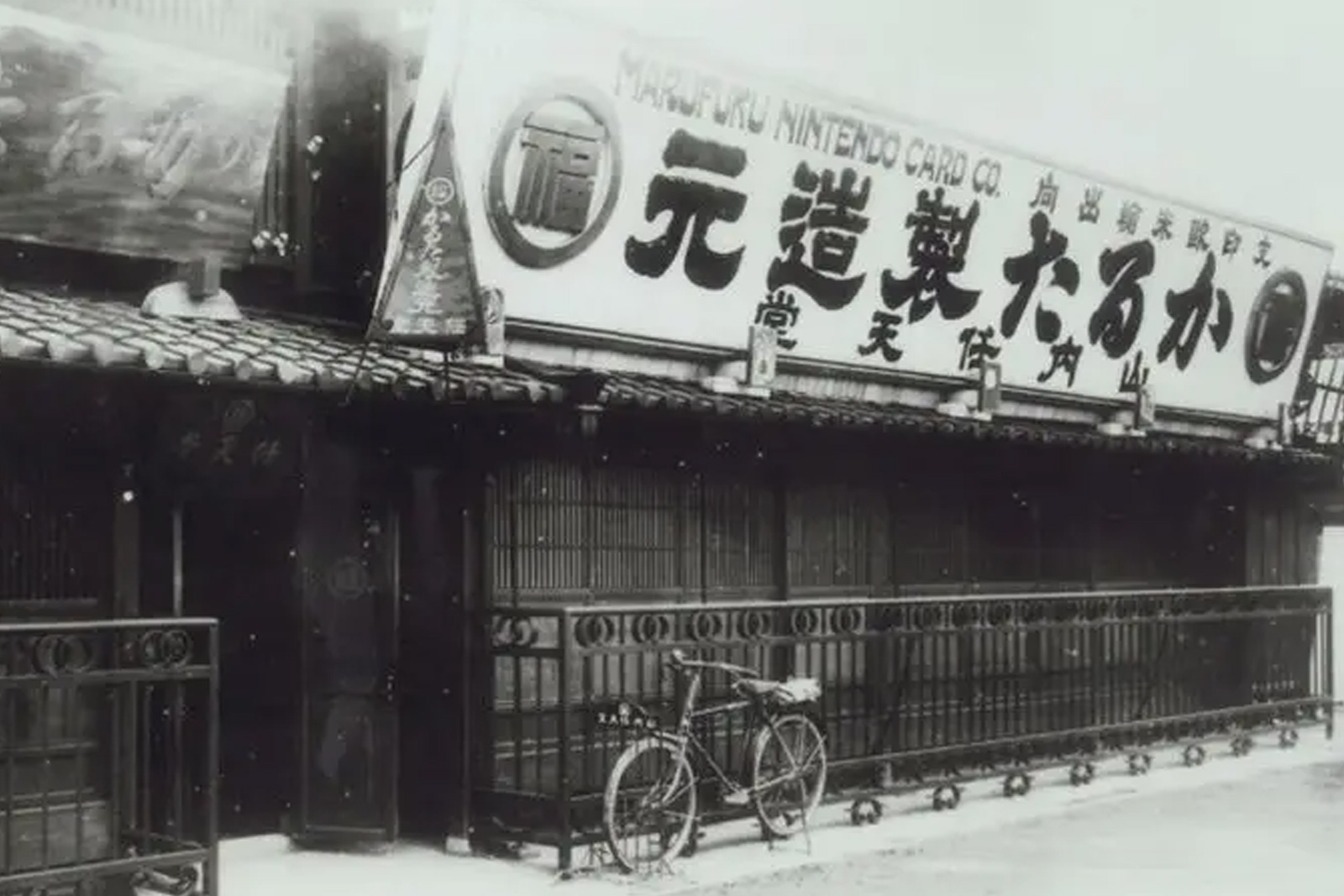The birth of a gaming giant
Pre-Nintendo era
Origins of playing cards in Japan
Playing cards have a long history going back to at least the 12th century, but the first known types to be introduced to Japan were by Portuguese explorers in the mid-16th century. Within a few short years, thriving trading routes were established and the first indigenous Japanese deck appeared, Tenshō karuta, getting its name from the Tenshō period, 1573–92.
Nintendo built its early success on many of the card types descended from these Portuguese designs.
Back to topIt’s fascinating to think that for almost a 1000 years, playing cards that most likely originated from China in the East, were introduced eventually to the West (Europe), back to the East again (Japan), and then finally mass exported back to Western markets in the 20th century!
Kyoto and the Meiji period
Kyoto was the capital of Japan for over a thousand years until the beginning of the Meiji period when it shifted to Tokyo in 1868.
The city had a long tradition of high-quality craftsmanship, especially in paper production, printing, and decorative arts and crafts, making it a natural location for playing card manufacturing.
Several card manufacturers worked in close proximity throughout the 19th century, adopting very similar designs and materials. The Marufuku Nintendo Card Company founded in 1889 was certainly not the only producer in the city at the time, despite it going on to become the global entity it is today. Oishi Tengudo (大石天狗堂) for example was founded in 1800 and is still around today.
Types of cards
Portugese-style ‘karuta’
Nintendo manufactured several types of these cards, or karuta (かるた), and still do in some cases! The Portugese-style karuta are typically smaller in size than standard 52-card Western-style decks.
Komatsufuda (小松札), A 48-card deck. The shogunate, in an attempt to remove the colonial and religious influences of Spain and Portugal, banned these cards forcing their radical redesign in 1633. Many were turned into abstract designs known as mekuri karuta as a result of Japan’s isolationist Sakoku policy. By the mid-20th century, only Komatsufuda remained.
Unsun Karuta (うんすんカルタ) has five suits of 15 ranks each for a total of 75 cards, and was developed in the late 17th century,
Kabufuda (株札) is another type of mekuri karuta, coming in a deck of 40 cards. All the suits shared identical designs and were used for gambling games such as Oicho-Kabu.
Harifuda (張札) and Hikifuda (引札) were also often used for gambling, Harifuda sets contain a total of 42 cards and Hikifuda, 48.
Hanafuda (花札) translates as ‘flower cards’ and is probably most strongly connected with Nintendo. The format as we know it today originated in Japan sometime during the Edo period (江戸, 1603–1868). They evolved from an interesting fusion of Portugese-inspired cards and, much older Japanese “object” or “picture-matching games” (物合わせ mono-awase) and E-awase (絵合わせ) that had been played since the Heian period (平安, 794–1185).
Each hanafuda deck has 48 cards with flower designs. Instead of being divided by 4 suits with 12 cards each, a hanafuda deck is divided by 12 suits (months) with 4 cards each.
Most traditional Japanese hanafuda sets are available with either black, kuro (黒), or brick-red, aka (赤), backs and borders. There is no other difference and the choice is down to player preference. Hanafuda were usually sold in double boxes, containing both a black deck and a red deck, but this is now uncommon.

Nintendo has produced many variations over the last century, the three main types available are:
- Daitoryo: Nintendo’s most successful and iconic Hanafuda product, Daitoryo translates into English as “president”. This type features a portrait of Napoleon. Why Napoleon? Well, that’s unknown, but it’s been suggested that the photograph Fusajiro Yamauchi (Nintendo’s founder) used of Napoleon was in fact George Washington, or it’s possible he assumed (wrongly) that Napoleon was the president of France.
Other brands opted for similar, but different figureheads to differentiate themselves, often famous generals or historical figures.
- Tengu: Tengu is a supernatural creature, half-man, half-beast, found in Japanese folklore, and his bright-red face is featured on a box of these cards. This motif was not exclusive to Nintendo and other card makers such as Ohishi-Tengudo produce very similar designs.
- Miyako no Hana: A more traditional style deck, it is much cheaper than the Napoleon variant. It comes with a transparent slide box.
The Daitoryo version is considered the best out of the 3 types, yet there are only slight differences between them, in paper texture and finish, and quality of the case.
There have been dozens of other designs and variants over the past century, but all based on the same basic premise of 48 cards. The majority of these have been discontinued, or lost to history.
Back to topHyakunin Isshu
Hyakunin Isshu (百人一首) is a classical Japanese anthology of one hundred Japanese waka by one hundred poets. Hyakunin isshu can be translated to “one hundred people, one poem [each]”; it can also refer to the card game of uta-garuta, which uses a deck composed of cards based on the Hyakunin Isshu.
The most famous and standard version was compiled by Fujiwara no Teika (1162–1241) while he lived in the Ogura district of Kyoto. It is therefore also known as Ogura Hyakunin Isshu (小倉百人一首).
Alongside hanafuda, Hyakunin Isshu are another popular type of traditional Japanese cards that Nintendo continue to manufacture today.
Back to topWestern ‘trump’ style
In 1902, Founder Fusajiro Yamauchi began manufacturing the first ever Western-style playing cards in Japan (also known as trump,トランプ). This was only 13 years after Nintendo’s inception as a Hanafuda playing card company.
The Western-style cards were originally intended for export, but proved popular domestically as well. Nintendo soon grew to become the dominant producer of Western playing cards for Japan.
The 1950s heralded the first of many licensing partnership deals, beginning with Disney in 1959, not just for playing cards, but with board games and other items. Nintendo has produced countless variations, including varieties of Nintendo ‘All-Plastic’ cards from the 1970s and 1980s onward.
The Mario Museum collection features several examples of the card types mentioned.

1889: Marufuku Nintendo Card Company
Nintendo was first established in the year 1889, when Fusajiro Yamauchi opened a small store in Kyoto, manufacturing and selling playing cards. This was during the time of the collapse of the Shogun and Samurai systems in the old capital Kyoto, shortly before the emperor moved to Edo, which later was to become known as Tokyo.
The first store used the name “Marufuku” from the time of its establishment in Kagiyacho, Shimogyo Ward, in Kyoto.

The Marufuku mark on the packaging and tags was originally the name of the Fukui family. Fusajiro Yamauchi was born in 1868 as the eldest son of Sosuke Fukui, before being adopted by Naoshichi Yamauchi in 1872 and inheriting the Yamauchi family name in 1881. After that, it became a registered trademark of Nintendo. Source.
The design of the logo combines the kanji 福 “fuku” (translates as good fortune/happiness) in a circle – “Maru” (丸 in kanji), or literally Marufuku (丸福).

Pre-WWII period
Another clue that indicates cards originate from the pre-WWII period is by studying how the name ‘Nintendo’ is displayed in Kanji. Traditionally, Japanese was written in vertical columns before the Japanese script reform of the early 20th century. These columns were read from top to bottom and from right to left. This way of writing is called tategaki (縦書き) – which literally means ‘vertical writing’.
Therefore, the traditional Kanji for Nin-Ten-Do was written right to left, as shown on the packaging of these cards 堂天任, whereas the modern way to write the characters is 任天堂 .

Post-WWII period to present day
Coming soon! Part two of the guide will focus on many of the playing card types produced by Nintendo over the last 80 years, including some of the quirkier types, such as magic trick decks, and pin-up cards!



